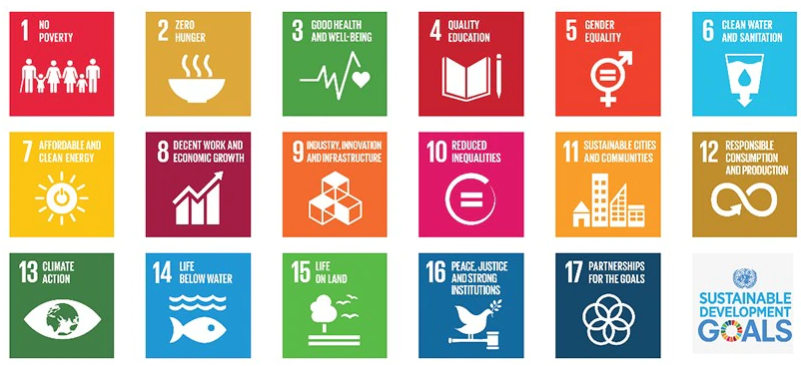The UN Sustainable Development Goals (SDGs)
Ever since the United Nations defined its Sustainable Development Goals (SDGs) in 2015, investors have become increasingly interested in investments that contribute to the realization of these goals and provide a good return. The 17 goals, which should be achieved by 2030, target a broad range of topics such as the availability of water and sanitation for all, food security, achieving gender equality, and access to affordable and sustainable energy.
The challenge: measuring an investment’s impact on the SDGs
It is easy to imagine that, for example, a solar company has a positive impact on the goals, and an oil company a negative one. The challenge, however, is to properly evaluate and quantify the contribution of all companies in an investment universe when building a targeted SDG strategy. This requires a framework, with clear, objective and consistent rules.
RobecoSAM is one of the first asset managers to meet this challenge by developing a proprietary SDG framework. This consists of taking a three-step approach. Robeco’s Credit team will use this framework for the global SDG credits strategy that will be launched in May. We will briefly explain the three steps.
Step 1: What does the company produce?
In step 1 we link companies’ products and services to the SDGs. To what extent do they contribute? Companies are assessed on an extensive set of rules and Key Performance Indicators (KPIs). These are summarized in a guidebook. The guidebook states whether the contribution of these products and services is positive, neutral or negative.
信貸投資的新動態
訂閱我們的電子報,緊跟最新的信貸投資趨勢。
For the telecom sector, for example, the starting point is positive. Telecommunications are an essential part of the infrastructure in a safe and connected society. Farmers can use mobile phones to check market prices before selling to middlemen, and market traders can accept payments in mobile money. This way, the telecom sector can contribute to a proper infrastructure (SDG 9), economic growth (SDG 8) and ultimately to the reduction of poverty (SDG 1).
We then determine the extent of the contribution, which in the case of telecom we deem low. Subsequently, we then dig deeper by looking at the individual companies within this sector and how they score on a set of KPIs. If, for example, more than 25% of the telecom company’s sales take place in emerging markets (which have most to gain from a good telecom network, as e.g. mobile payments can provide large numbers of unbanked with bank accounts), we upgrade the impact from positive-low to positive-medium. See figure 2 for an illustration of the KPIs used.
Step 2: How does the company operate?
SDGs are also about how companies operate themselves. Are they polluting, do they respect labor rights, do they refrain from corruption? In step 2, the credit analysts check if the way the firm operates is compatible with the SDGs. If necessary, the SDG ratings can be adjusted.
Step 3: Are controversies known?
In the final step, we check whether the company concerned has been involved in any controversies, such as oil spills, fraud or bribery. This step can lead to adjustments in the rating. If firms commit serious and structural breaches of the UN Global Compact, they are excluded.
The outcome of this three-step analysis is quantified with an SDG score. This is shown in Table 1.
Table 1 | SDG rating methodology

Source: Robeco
The good and the bad
Robeco’s credit analysts and RobecoSAM’s SI analysts have done a mapping exercise of some 450 companies. 62% of the companies have been assessed as making a positive contribution, such as grid operators, healthcare companies, banks (by providing finance, especially in emerging markets, banks play an important role in fostering innovation and stimulating economic growth) and utilities with a relatively small share of coal, nuclear energy and oil in the energy generation mix.
26% of the companies analyzed make a negative contribution. Examples are energy producers with a relatively large share of fracking, companies that produce unhealthy food, or car manufacturers with a low share of EV/hybrid models.
Conclusion
Assessing a company’s contribution to the SDGs is a challenge. However, we have found a way by applying the RobecoSAM SDG framework, which quantifies the contributions that a company’s products and services make to the SDGs. Results of our analysis indicate that sectors with a weaker SDG profile include the energy, car manufacturers and food & beverage sectors. However, we have also found that there are more than sufficient issuers to create a well-diversified global credit portfolio with a positive impact on the SDGs.
Read the full article免責聲明
本文由荷宝海外投资基金管理(上海)有限公司(“荷宝上海”)编制, 本文内容仅供参考, 并不构成荷宝上海对任何人的购买或出售任何产品的建议、专业意见、要约、招揽或邀请。本文不应被视为对购买或出售任何投资产品的推荐或采用任何投资策略的建议。本文中的任何内容不得被视为有关法律、税务或投资方面的咨询, 也不表示任何投资或策略适合您的个人情况, 或以其他方式构成对您个人的推荐。 本文中所包含的信息和/或分析系根据荷宝上海所认为的可信渠道而获得的信息准备而成。荷宝上海不就其准确性、正确性、实用性或完整性作出任何陈述, 也不对因使用本文中的信息和/或分析而造成的损失承担任何责任。荷宝上海或其他任何关联机构及其董事、高级管理人员、员工均不对任何人因其依据本文所含信息而造成的任何直接或间接的损失或损害或任何其他后果承担责任或义务。 本文包含一些有关于未来业务、目标、管理纪律或其他方面的前瞻性陈述与预测, 这些陈述含有假设、风险和不确定性, 且是建立在截止到本文编写之日已有的信息之上。基于此, 我们不能保证这些前瞻性情况都会发生, 实际情况可能会与本文中的陈述具有一定的差别。我们不能保证本文中的统计信息在任何特定条件下都是准确、适当和完整的, 亦不能保证这些统计信息以及据以得出这些信息的假设能够反映荷宝上海可能遇到的市场条件或未来表现。本文中的信息是基于当前的市场情况, 这很有可能因随后的市场事件或其他原因而发生变化, 本文内容可能因此未反映最新情况,荷宝上海不负责更新本文, 或对本文中不准确或遗漏之信息进行纠正。

